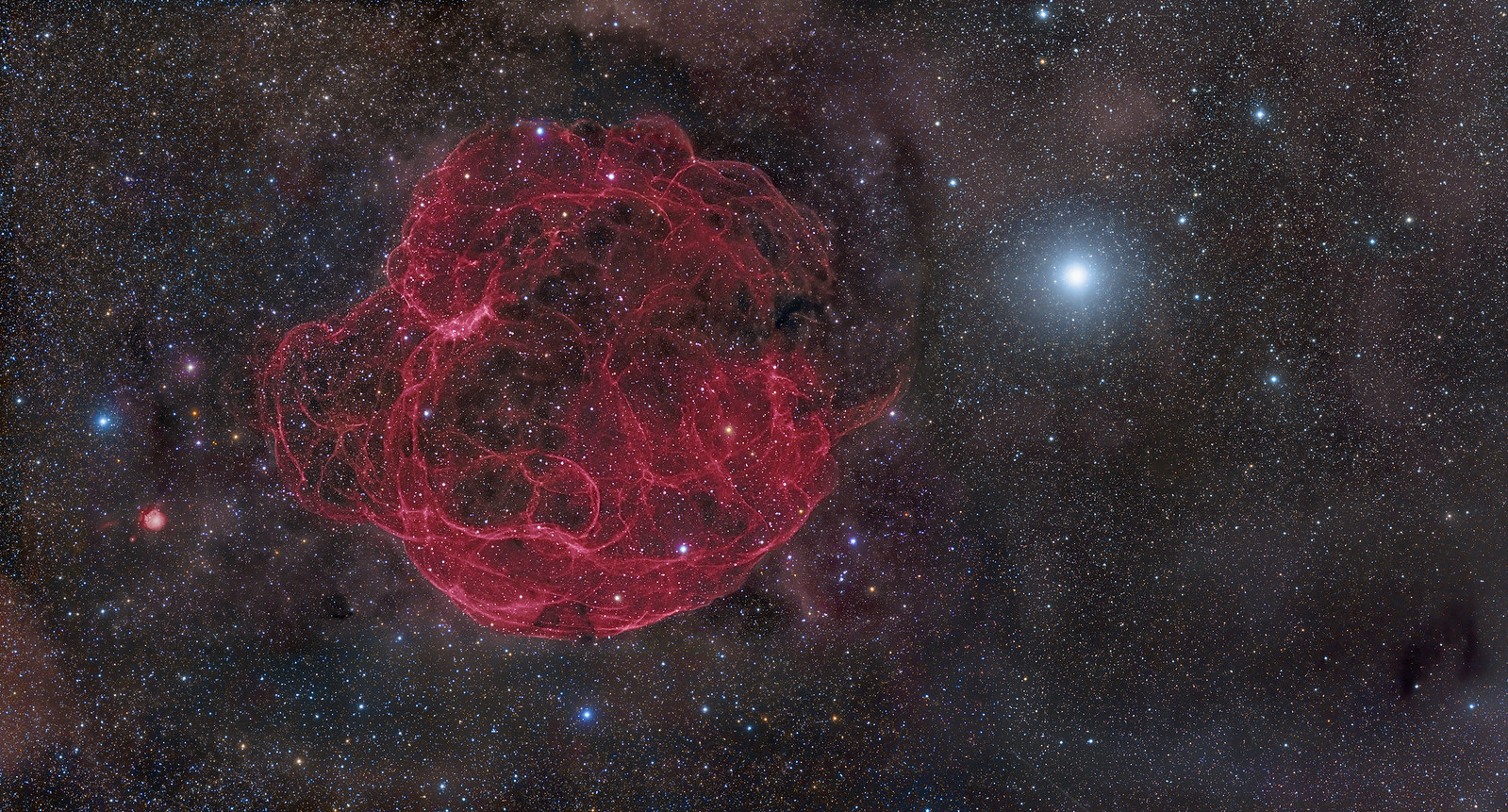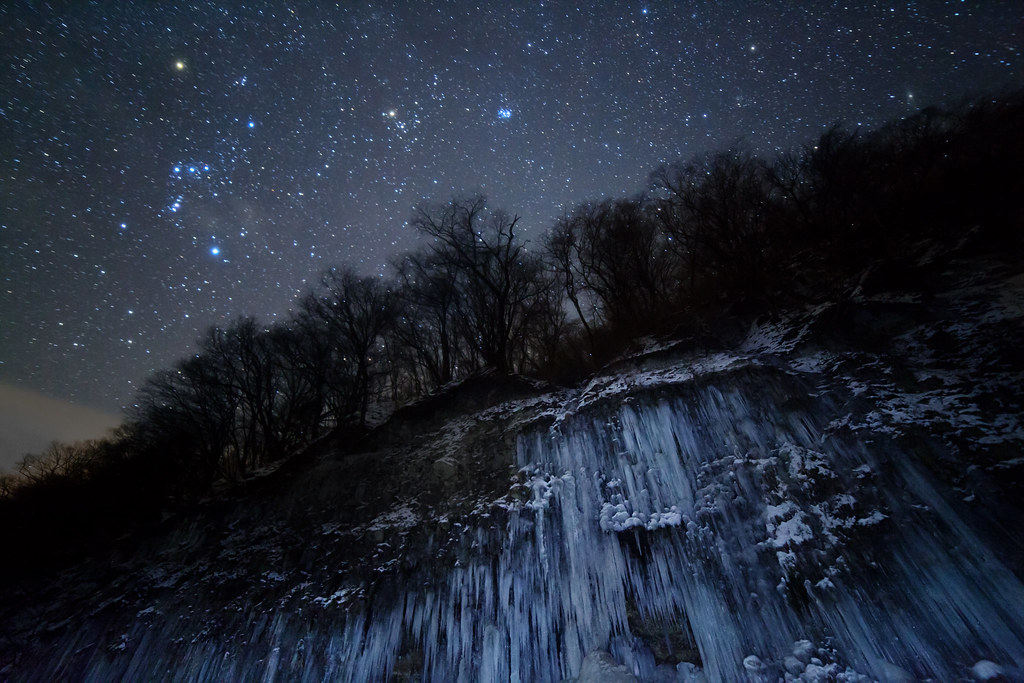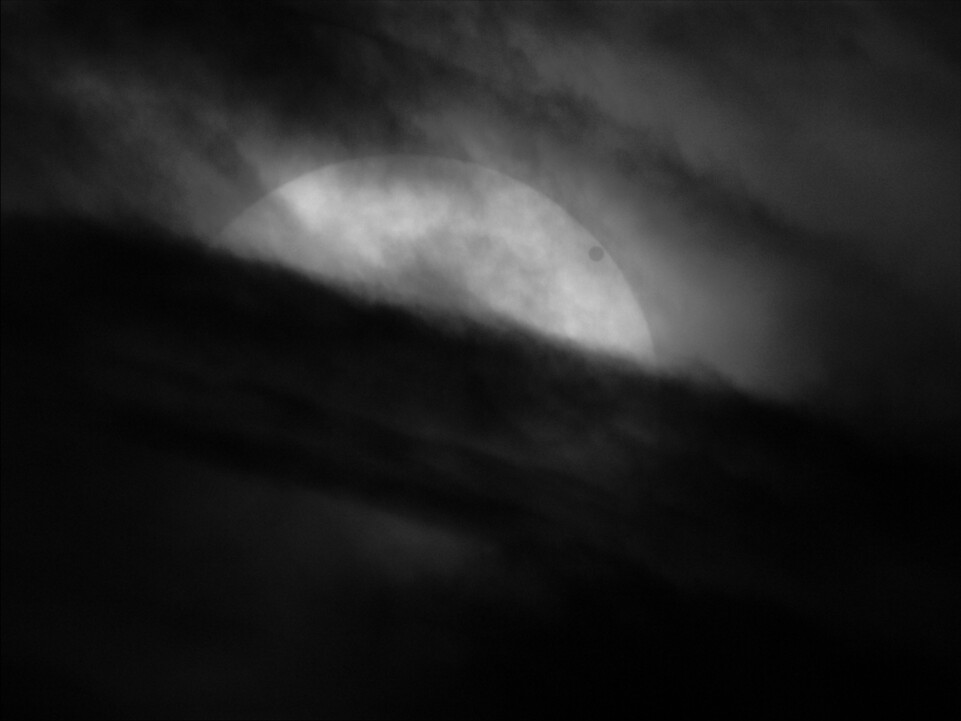 |
| M51 Whirlpool Galaxy |
This is the winning picture for the 'Deep Space' category and was taken by Martin Pugh. He used an expensive Apogee camera mounted to an even more expensive Planewave telescope to capture this image of the M51 Whirlpool Galaxy. The actual image is far sharper than shown here and the detail in the spiral arms is incredible. Those dots that look like stars are actually other galaxies! You can find more of Marin's images on his Flickr account HERE
 |
| Simeis 147 Supernova Remains |
If you ever wondered where all the particles in your body came from the answer is from events such as this. This image shows the remains of a star that exploded around 40,000 years ago. The particles are still moving outwards and they now straddle several galaxies. The photographer Bernal Andreo used a $10,000 combination of a Takahashi telescope mounted to his SBIG camera to get this image - worth every penny I think. You can find more of his work on Flickr HERE
The next category is one that everyday photographers like myself might have a chance of entering. The Earth and Space category is for photos that include landscape, people or other 'Earthly' things along with an astronomical subject.
 |
| Ice Starfall |
This is my favourite image from this year's competition as it is so full of mood and atmosphere. Photographer Masahiro Miyasaka took this image in Japan using a Canon 5D Mk2 with a 14mm lens - so no fancy telescopes or complicated equipment. The frozen ice streaks work perfectly to draw your eye up towards the heavens and the trees help to give a sense of scale. His Flickr page is HERE.
In the next category I'm sure the runner up must be gutted because I thought his image was way better than the actual winner. The Our Solar System category is for photos of our Sun and its family of planets, moons, asteroids and comets.
 |
| Transit of Venus |
This image by UK photographer Chris Warren was chosen as the winner by the judges because "for me this picture perfectly captures the excitement of the 2012 transit of Venus. After getting up at 4am on a cloudy morning it really didn't look as though the British weather was going to co-operate. But then, with just minutes to go, a gap appeared in the clouds and we got a precious glimpse of Venus in front of the Sun." Chris has more pictures on his Flickr account HERE
The shot was taken using a Grasshopper camera mounted to a telescope. I'd never even heard of this sort of camera but a quick search on the internet revealed some clips of it in action. The clip below is, I'm assuming, a shot of the Sun in 'action'. Sorry about the music!
Now for one of the highly commended shots in the same category - also taken of the transit of Jupiter past the Sun.
 |
| Venus Transit |
This shot made me mouth a silent 'Wow'. It's by Australian photographer Paul Haese and was constructed by using a mosaic shooting technique. This uses the camera to capture a small area in great detail. The photo is then pieced together with other shots, like a jigsaw, to create one large image. This was made from 6 panels of images with each panel containing 750 photos! Paul is clearly a keen astronomy photographer and his Flickr page shows entries for some of the other categories HERE.
The next category is the one that makes me green with envy as it is the Young Astronomy Photographer category. It's sickening how much talent these young men, and all the prize winners were men, have already got.
 |
| Pleiades Cluster |
The final image here, from the same category, will hopefully provide a kick up the butt for any would be astro-photographers who think you need fancy kit to get impressive results.
 |
| Lunar Mountains |
I was given a telescope not too dissimilar to the Astroview for Christmas a few years back. I think it's time I got it out of the cupboard, dusted it off, and got a mount to fit my Canon 5D to it :)
Congratulations to all of the winners. If this article has whetted your appetite for astronomy photography and you would like to see more images then go to the competition result page at Royal Museums Greenwich
The BBC news pages have picked up on the story and there is a short video about the entries HERE

Fascinating post Paul. Thanks.
ReplyDeleteAndre